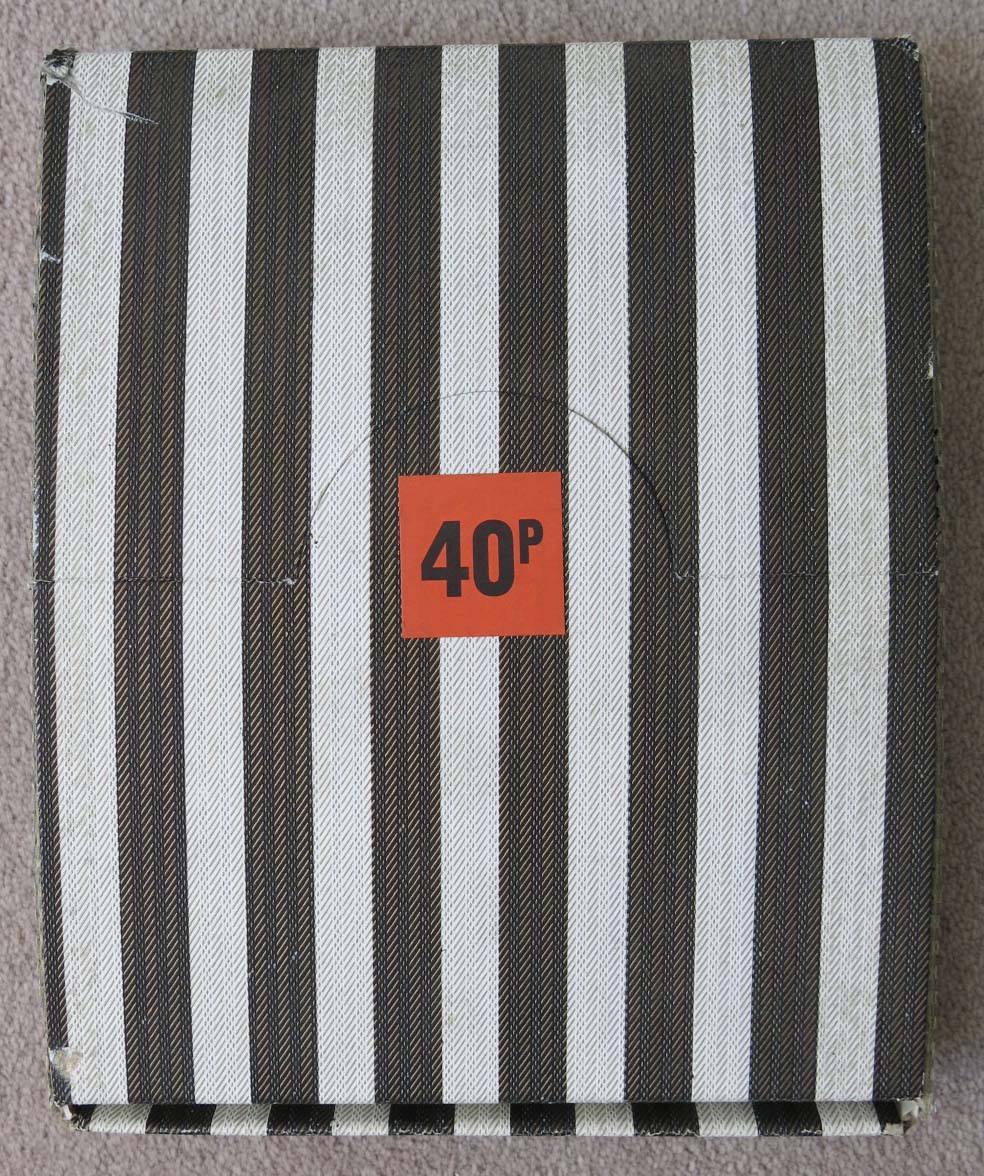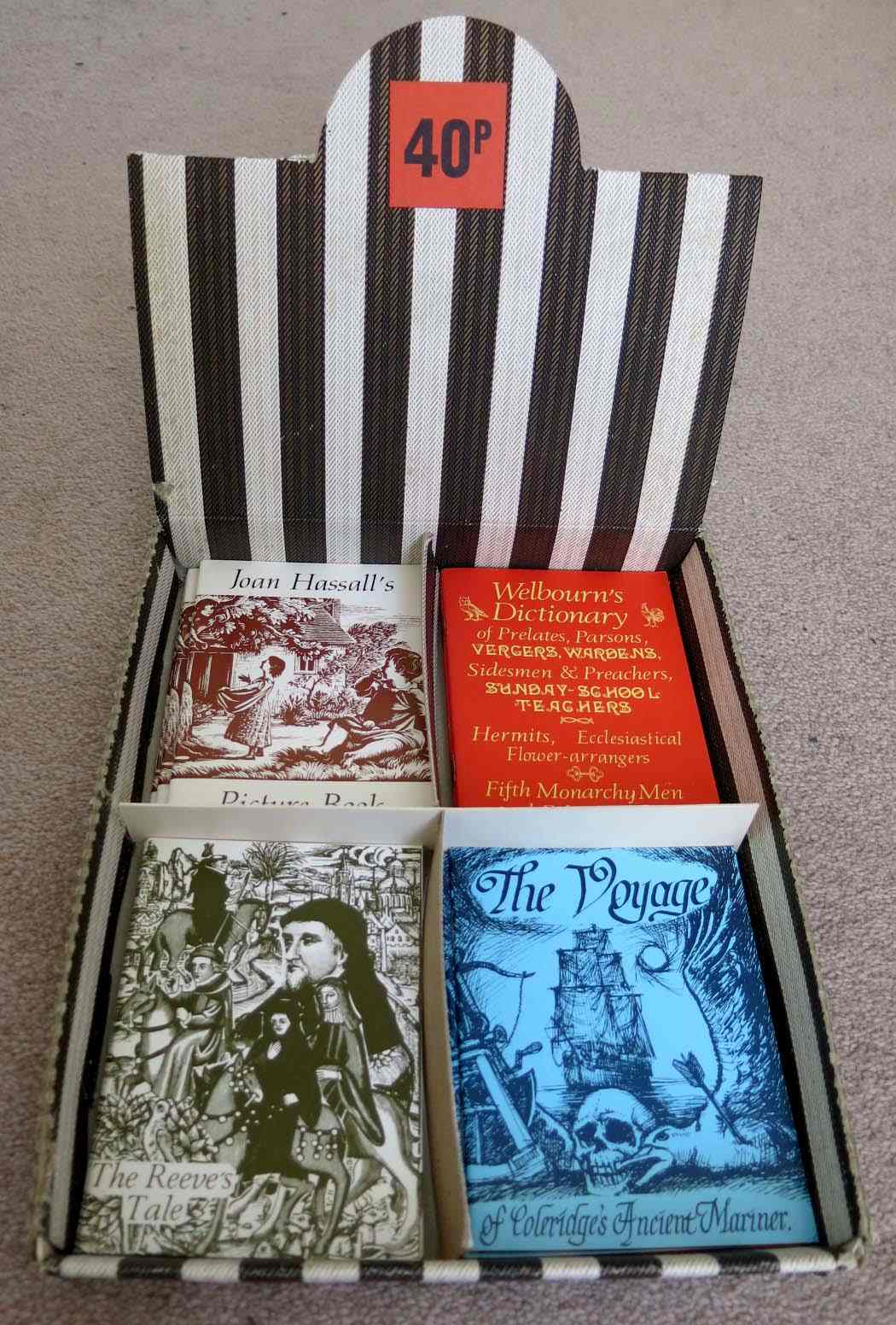Notes on the small books written and published by J.L.Carr
Carr published his first small book, an edition of the poems of John Clare, in 1964, the 100th anniversary of Clares's death. Clare was born in Helpston in Northamptonshire, Carr's adopted county, although it is now in Cambridgeshire. Carr is also said to have published it because he had discovered that his milkman was Clare's grandson (Rogers, 2003).
Carr explained in many of his small books why the format was suitable, none better than inside the volume of the poems of Algernon Swinburne:
This ... pocket library (is) a collection well suited for castaways and those trapped in cold bedrooms [only one hand to the wrist need suffer exposure]. They can be palmed from the cuff during tedious speeches, repetetive sermons and anecdotary conversational monologue. By and large, perusal and reflection upon the contents will do no harm and we have had letters certifying spiritual and intellectual benefit. They fit a common envelope and go for minumim postage.
In this is contained a reference to Frank Muir, who had chosen The Harpole Report to take with him as a castaway on Desert Island Discs, a BBC radio programme; to the sermons he listened to as a child in the methodist chapel where his father preached; and it's an advertisement: these books will not cost a lot to buy or send.
It is interesting to note that the name, The Quince Tree Press
, was not printed by Carr on any small book other than his History of the Quince Tree Press, published in 1987. In all small books he usually gave only his name and address and sometimes used a colophon. Only the novels name the Quince Tree Press.
Display box
Initially Carr had trouble selling his small books because they tended to get lost among other books on book shelves. So he developed a small box for book sellers to display them. An example of a display is shown below, probably used in the late 1980s.


A display box for small books closed (left), and open (right) to display four small books in sections within, with the lid folded back and tucked into the tray. One of the separators has been lost and replaced with a piece of white card.
Points of identification
To be able to identify the edition or impression it is necessary to see both the front and rear covers and the information usually printed inside the rear cover (booksellers please note this).
- Covers. Most covers were designed by JLC himself or by Chris Fiddes. Carr sometimes changed the colour of the cover between impressions e.g. Robert Burns or changed the cover design completely, usually between editions when he changed the content e.g. William Morris, but not always e.g. John Clare. Some editions use glossy, coated card, others use matt, uncoated card.
- Inside rear cover. This is where Carr usually printed the colophon, the name of the printer, occasionally a date, and in a few instances a printing history. The information given here usually identifies an impression, but doesn't give the order of issue.
- Paper. Most early books were printed on white laid paper; coloured papers were used for later impressions. All books of engravings were printed on white paper.
- Staples. Most early books had one staple; later books had two. There are a few exceptions.
More information about these identifying features is given here. The links below are to:
- Carr's small books by allocated number
- Carr's small books by estimated year of issue
Go back to the main page to find links to the small books, by category.